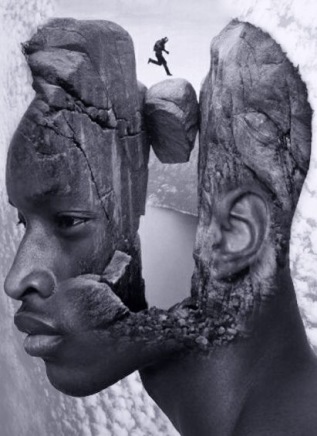Our working method
We begin all assignments by analyzing the multicultural group dynamics, your company values, cultural HR strategy and the intercultural competence in your customer meetings and at your workplace. Based on the results, we develop a concrete strategy with suggestions on how you can improve your multicultural workplace and how to culturally adapt your leadership. The strategy includes advice, training, workshops, coaching and implementation.
The aim is to move from expensive cultural clashes to dynamic cultural meetings that provide increased added value such as improved creativity, profitability, knowledge and competitiveness.
Our proposals for strategies are adapted to the knowledge that everything is culturally related, such as: conflict resolution, communication, motivation factors, marketing, sales, leadership preferences, sense of belonging, teamwork, etc.
Our consulting areas
Crosscultural Dynamic
Multicultural & Multireligious Workplaces
Intercultural Leadership
Cultural Dilemmas in Merger & Acquisition
Intercultural Marketing Strategies
Cross-cultural dynamics is a concept that describes the interaction in a team, between individuals from various cultural backgrounds. This interaction between your employees determines how much added value you can gain from having a crosscultural and multireligious workplace.
Building a multicultural dynamic in your workplace is a long-term effort that means starting with reviewing the company's values.
Other important parts of the work is to create an open, permissive work climate without consequences for dissenting opinions, but also being careful that everyone is treated equally without exception.
When you work diligently on these issues, you expand your ability to use and develop your employees' cultural differences in a positive and competitive way. Which in the long run contributes to a dynamic multicultural work- environment that increases and improves creativity, willingness to innovate, profitability, competitiveness collaboration, productivity, etc.
With my research-based tool "The Culture Tool", the work towards the goal of achieving intercultural intelligence and multicultural dynamism becomes easier and more effective
Culture influences religion and religion influences culture!
Hundreds of studies have shown how religious beliefs shape an individual's values and culture. Hereafter, we will include the influence of religion when we use the concept of multicultural workplaces.
All parties in multicultural operations work cognitively, socially and emotionally in very complex environments. Operations in such multicultural workplaces thus become more unpredictable, complex, contradictory and harder to control, but if managed properly, enormous competitive advantages are achieved.
In multicultural environments, it is important to be able to quickly analyze and process information, feelings, attitudes, conflicting values, draw conclusions. plan actions etc.
The decisive factor in moving from culture clashes to profitable cultural meetings is to create an inclusive work environment. The feeling of community and belonging is equally important in all cultures and provides a sense of security. But keep in mind that everything is culturally conditioned and so is the sense of belonging.
To achieve added value in these multicultural environments, all parties need to be willing to change perspectives, be curious, challenge their prejudices and reconsider their positions and values.
If you succeed in getting employees to voluntarily and enthusiastically work with their intercultural intelligence, the business will become more creative, innovative, exciting and develop continuous learning.
A multicultural workplace puts you and your leadership to the test.
As a Intercultural leader, you must be prepared to reconsider your attitudes, preconceived notions and values. Especially knowing that everything is culturally conditioned, even the type of leader we prefer.
It is not only about acknowledging cultural differences, but also about understanding and respecting them in order to create a work environment that is inclusive and celebrates diversity.
An effective and successful intercultural leader plays a critical role in ensuring success in a multicultural workplace. He must realize that the ability to culturally adapt his leadership is necessary. It includes, among others, creating a work environment that is inclusive, permissive and equal for all, which is a process that takes time and energy. It also requires working with self-awareness and understanding of one's own cultural biases. The process is long-term and includes ensuring effective communication, minimizing misunderstandings, conflicts and maximizing cooperation.
Culturally aligning your leadership can improve communication, increase productivity and foster innovation in the workplace. The market reach will also be expanded and you will be able to build strong relationships with customers from different cultural backgrounds. Such leadership also makes it easier to accommodate different cultural norms and expectations, resulting in stronger relationships between team members.
Furthermore when the leader creates a curious climate where people are open and willing to absorb a diversity of perspectives and experiences, it also increases creativity within the organization and leads to new innovative problem solutions.
In such a climate, the leader will notice that it becomes easier to make decisions as he can see problems from different angles and take different factors into account. Likewise, he will recognize the importance of creating an open and inclusive communication style to create a positive work environment where everyone feels respected and valued.
Merger & Aqcuisition can be beneficial for the companies involved but it can also lead to cultural problems. Especially in cases where the corporate culture in both companies differs, there is a risk that this could lead to conflicts, which could affect the success of the M&A.
The integration of corporate cultures is a critical aspect of M&A that is often overlooked. Corporate culture refers to the shared values, beliefs and behaviors that shape how people work together in an organization. When companies with different cultures merge, it can create a clash of values that is often difficult to reconcile. This can lead to a number of problems, such as reduced work morale, profit and productivity. Therefore, it is important to address cultural issues early in the M&A process to ensure a successful integration.
The M&A process includes several steps such as due diligence, negotiations and integration but also identifying similarities and differences in values, beliefs, practices and communication styles
The process should include the following areas: Leadership styles - Organizational structure - Communication channels - Decision-making processes - Employees' commitment and motivation - The company's values and beliefs, etc.
The cultural assessment process should also consider the potential impact of M&A on employees, customers and other stakeholders of both companies.
It is almost impossible to live life today without interacting with someone from another culture. These cultural encounters can be wonderful opportunities to learn from others and appreciate our differences.
Unfortunately, many of these interactions result in misunderstandings and culture clashes that create barriers. The inability and unwillingness to respect and appreciate our differences can negatively affect our personal lives and our businesses.
Reaching out with your company's offerings internationally means interacting with a culturally diverse audience. The basis of all marketing involves understanding customer needs in order to better satisfy them.
When expanding your business in the international market, it becomes crucial to understand the cultural aspects related to the customer, its consumption and purchasing process.
Intercultural marketing thus becomes an important part of understanding the interaction between your cultural differences, as well as the social and individual diversity of target groups and markets.
Images, symbols, colors and shapes have different meanings in different cultures, at the same time different markets create their own rules and rules of the game. Add to that, that each region has special behavioral norms, rules of conduct, specific attitudes, different communication methods and habits, and you realize the importance of building a market strategy that takes cultural diversity into account.
An excellent example of a successful marketing strategy is that of a well-known American company that offers different flavors in different markets. Today they have over100 flavors that they sell around the world. On the other hand, a single color can lead to reduced sales figures. It happened to a pharmaceutical company that, when they entered an Asian market with a white vitamin drop, they made a big loss. It turned out that the color white symbolized death in some parts of Asia, and for the customers the drops obviously could not be associated with a healthy life.
These examples show that it is crucial to be aware of cultural diversity when planning international growth. A knowledge that will be the key to success, especially for SMEs.
A well-thought-out intercultural marketing and sales strategy thus significantly increases the chance of success in the new market.

















